Wolfram Function Repository
Instant-use add-on functions for the Wolfram Language
Function Repository Resource:
Display a given number of rows in the Leibniz harmonic triangle
ResourceFunction["LeibnizHarmonicTriangle"][n] creates a two level table representing the first n rows of Leibniz's harmonic triangle. | |
ResourceFunction["LeibnizHarmonicTriangle"][r,c] returns the c-th element in the r-th row of the triangle. |
Display the first five rows of Leibniz's triangle:
| In[1]:= |
| Out[1]= |
Show them as a triangle:
| In[2]:= |
| Out[2]= | 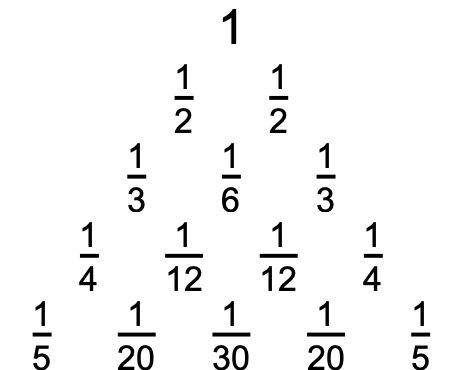 |
Reverse hockey-stick property: the blue number 1/3 equals the infinite sum of the numbers along the orange line or the 4th diagonal:
| In[3]:= |
| In[4]:= | ![colorBand[list_, idx_Integer, col_RGBColor] := Module[{updated = list},
updated[[idx]] = Style[list[[idx]], 18, col, FontFamily -> "Helvetica", Background -> LightBlue]; updated]](https://www.wolframcloud.com/obj/resourcesystem/images/ed6/ed68dc61-9633-486c-95ee-ca15f54dfa8a/0662412b8221a349.png) |
| In[5]:= | ![Column[Grid[{#}, ItemSize -> 3] & /@ Prepend[
colorBand[#, 4, Orange] & /@ (lt[[4 ;;]]),
Splice[lt[[{1, 2}]]~Join~{colorBand[lt[[3]], 3, Blue]}]
], Center]](https://www.wolframcloud.com/obj/resourcesystem/images/ed6/ed68dc61-9633-486c-95ee-ca15f54dfa8a/32caded196afe657.png) |
| Out[5]= | 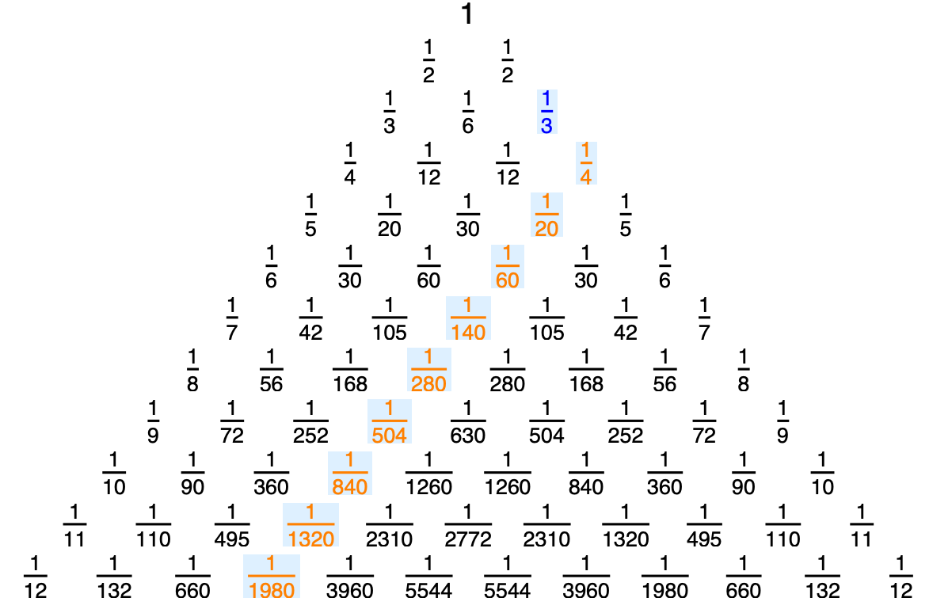 |
Verify with symbolic summation with the definition of Leibniz triangle by built-in Beta function:
| In[6]:= |
| Out[6]= |
In general the infinite sum along c-th column is L(c-1,c-1):
| In[7]:= |
| Out[7]= |
| In[8]:= |
| Out[8]= |
The sum of denominators in r-th row is r·2r-1:
| In[9]:= |
| In[10]:= |
| Out[10]= |
| In[11]:= |
| Out[11]= |
The Leibniz harmonic triangle is related to binomial triangle:
| In[12]:= |
| Out[12]= |
| In[13]:= |
| Out[13]= |
| In[14]:= |
| Out[14]= |
The original Sierpiński triangle pattern:
| In[15]:= | ![lt = ParallelMap[Boole[ResourceFunction["FractionMod"][#, 8] == 0] &, ResourceFunction[
"LeibnizHarmonicTriangle", ResourceSystemBase -> "https://www.wolframcloud.com/obj/resourcesystem/api/1.0"][500], {2}];](https://www.wolframcloud.com/obj/resourcesystem/images/ed6/ed68dc61-9633-486c-95ee-ca15f54dfa8a/52fdf5eb21ceb294.png) |
| In[16]:= |
| Out[16]= | 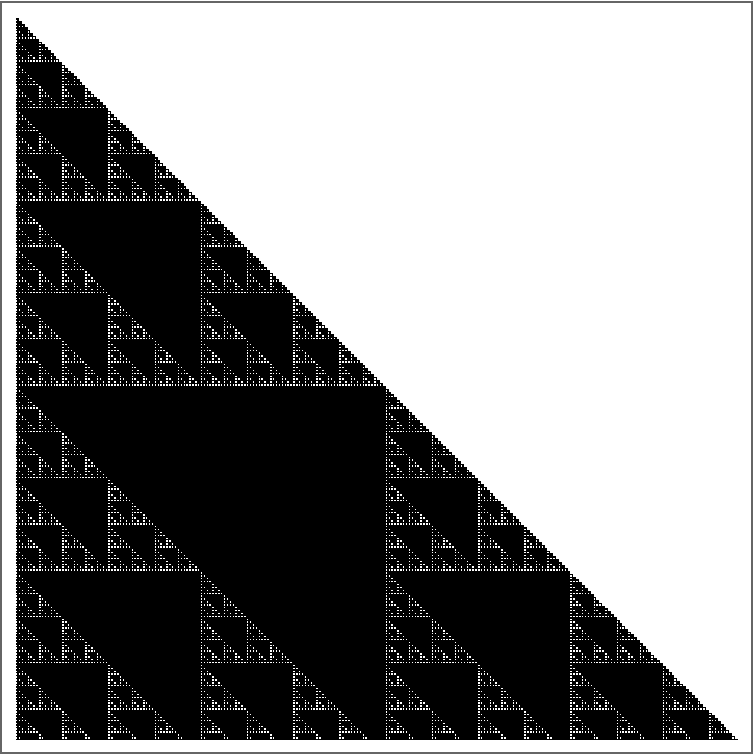 |
Sierpiński triangle using fraction mod 3:
| In[17]:= |
| Out[18]= | 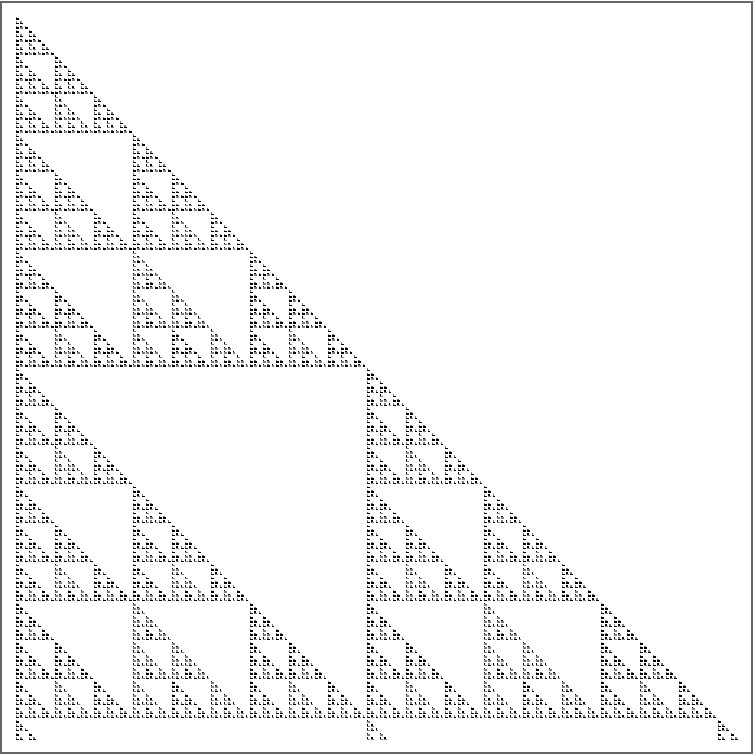 |
Sierpiński triangle using fraction mod 5:
| In[19]:= |
| Out[20]= | 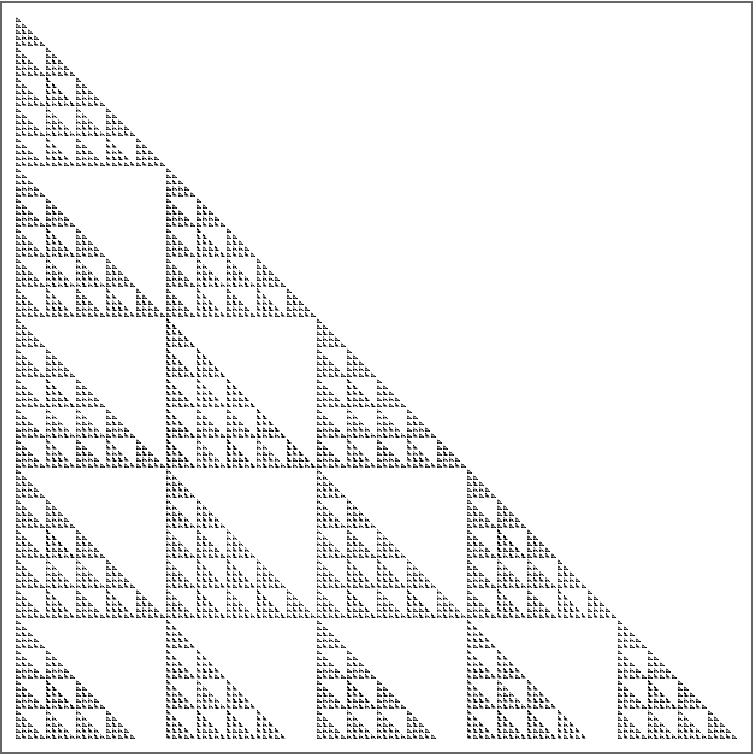 |
Wolfram Language 14.0 (January 2024) or above
This work is licensed under a Creative Commons Attribution 4.0 International License